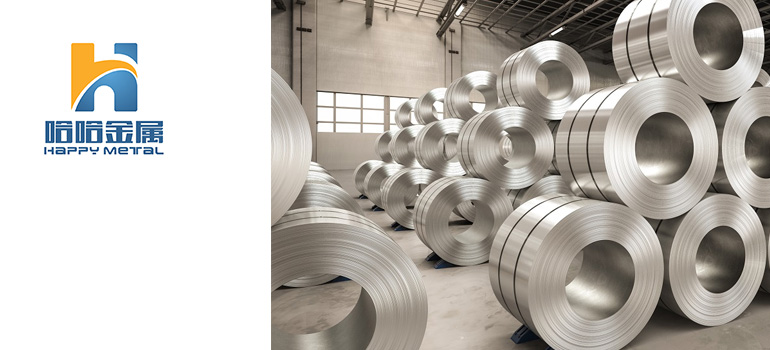Summary:
Why CRGO core is used in transformers?
What is CRGO core?
Use of CRGO?
How does CRGO core offer high permeability?
Different types of CRGO core?
What is CRGO core? Why do you need it in your transformer? How does it work? These are some of the questions we will answer in this post. When most people think about the structure of a transformer, the first thing that comes to mind is the copper wire windings. But what if I told you that there was another component that played an important role in the transformer function? That component is CRGO core. In this blog post, we’ll take a closer look at CRGO core and its role in transformer function. Stay tuned!
CRGO, or Cold-Rolled Grain Oriented Electrical Steel, is a key component in modern electric transformers. Without it, your transformer would not function properly.
What is CRGO core?
First developed in the early 1940s, CRGO core is made from a silicon-steel strip that has been cold-rolled and annealed. The cold rolling process gives the steel its high magnetic permeability, while the annealing process ensures good electrical conductivity.
Core is an essential component of the transformer. It has a direct impact on the performance and life of the transformer. The key factors that make CRGO so special are its high electrical resistivity and low thermal conductivity. This combination ensures excellent performance in terms of voltage regulation, current rating, and insulation. Because of these benefits, CRGO has become the preferred core material for transformers used in demanding applications such as renewable energy systems and data centers.
Use of CRGO?
CRGO core is used in transformers where there is a need for high magnetic flux density and low core losses at working frequencies up to 60Hz.
CRGO cores are also used in switchgear, ballasts, inductors, electromagnets, and other devices that require a high degree of magnetic flux density. It offers many advantages over other types of transformer cores, including higher strength, lower costs, and superior electromagnetic properties. CRGO cores are available in a variety of grades and sizes to meet the needs of different applications.
How does CRGO core offer high permeability?
CRGO core offers high permeability because of its unique composition. It’s made up of multiple layers of metal, with a thin layer of insulating material in between each metal layer. The metal layers are separated by a thin layer of material that is permeable to magnetic flux. This unique composition allows CRGO core to offer high permeability while still being resistant to corrosion and rust. It’s an essential component in many electrical applications, and its high permeability makes it ideal for use in transformer cores.
Different types of CRGO core
CRGO core is an important part of the electrical transformer. CRGO steels are classified according to their silicon content as low, medium, and high silicon grades. The CRGO cores with low silicon content (0.5% Si) are called fully processed CRGO steels and are generally used for manufacturing electrical transformers having a rating of more than 11kV. CRGO steels with medium silicon content (1-2% Si) are called semi-processed CRGO steels and CRGO steels with high silicon content (>2 % Si) are called nonprocessed CRGO steels. The main difference between fully processed, semi-processed, and non-processed CRGO steel is the amount of silicon present in them. CRGO cores are also available in different sizes. The most common sizes are 50mm, 100mm, and 150mm.
Pros and Cons:
-Pros:
- CRGO Core can improve the efficiency of electrical transformers This can help to improve the efficiency of the transformer and reduce its operating costs.
- CRGO core can improve the power factor of electrical systems Another advantage of using it in electrical transformers is that it can help to improve the power factor of the overall electrical system. The power factor is a measure of how effectively electricity is being used by a system. A higher power factor indicates that less electricity is being wasted, and this can lead to lower energy bills for businesses and consumers.
- CRGO core can extend the life of electrical transformers Finally, it can also help to extend the life of electrical transformers. This is because the material is resistant to corrosion and has a high melting point, which means that it can withstand high temperatures without breaking down. This can help to prolong the lifespan of a transformer and reduce the need for replacement parts or repairs.
-Cons:
- They’re Expensive One of the primary disadvantages of CRGO cores is that they’re expensive. This type of core is typically made from a material called silicon steel, which is more expensive than the materials used to make other types of cores. As a result, transformer manufacturers often have to charge more for CRGO-core transformers than for other types of transformers.
- They’re Heavy Another disadvantage of CRGO cores is that they’re heavy. This can make them difficult to transport and install, as well as make it more difficult to replace them if they ever need to be repaired or replaced.
- They Require More Maintenance CRGO cores also require more maintenance than other types of cores. This is because the material used to make them is susceptible to corrosion, so they need to be regularly cleaned and inspected. Additionally, the windings on CRGO-core transformers are typically more delicate than those on other types of transformers, so they need to be handled with care.
CRGO core is the perfect key component for electric transformers as it offers high resistivity, low hysteresis losses, and excellent magnetic properties. These aspects are essential in providing safe and efficient electricity to consumers. CRGO cores have been used for over 100 years and continue to be the preferred choice for many transformer manufacturers.




